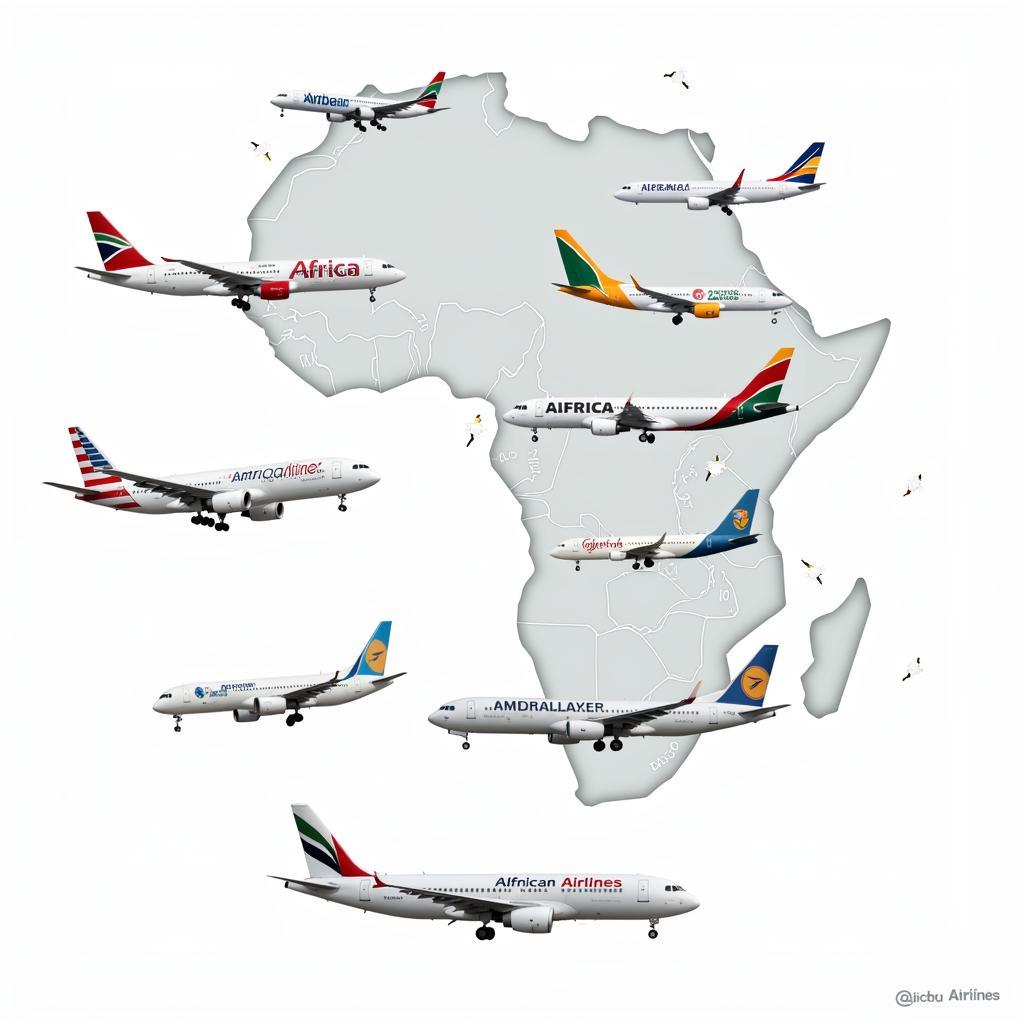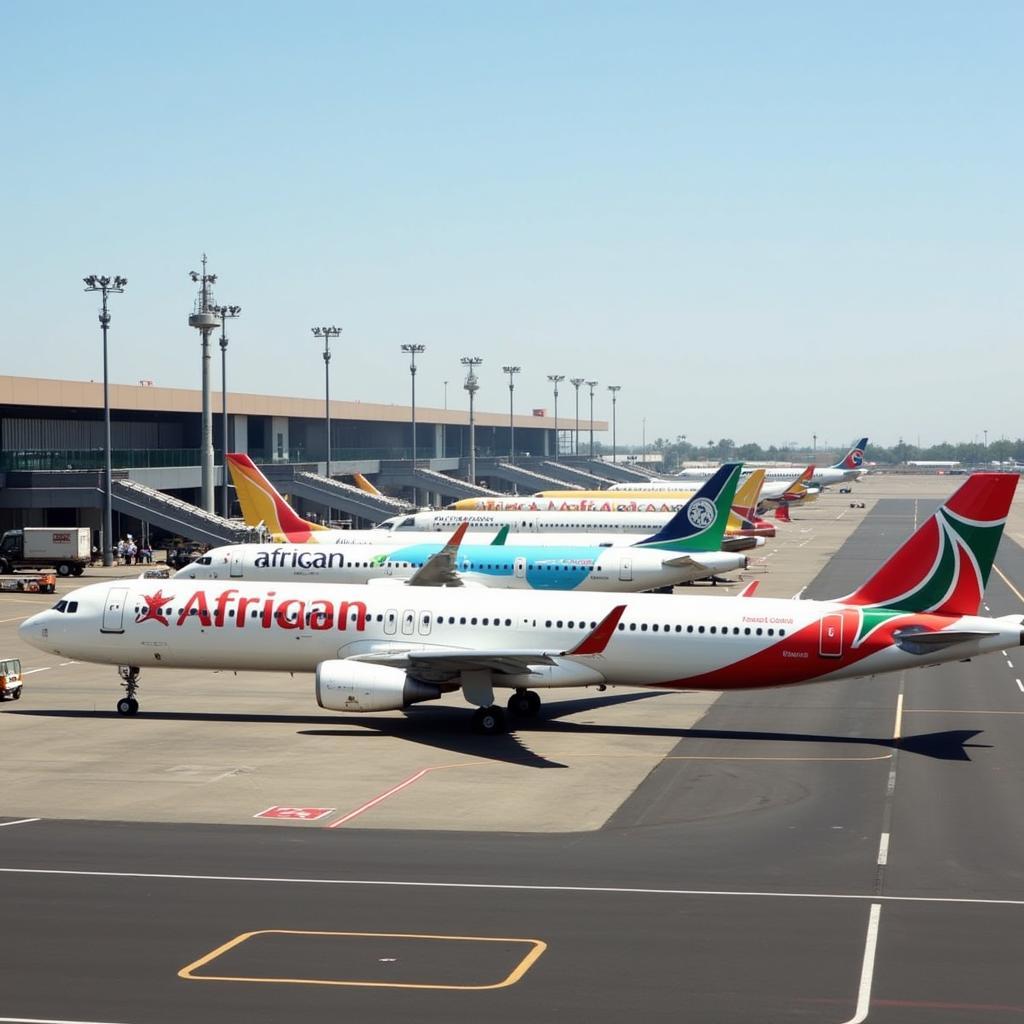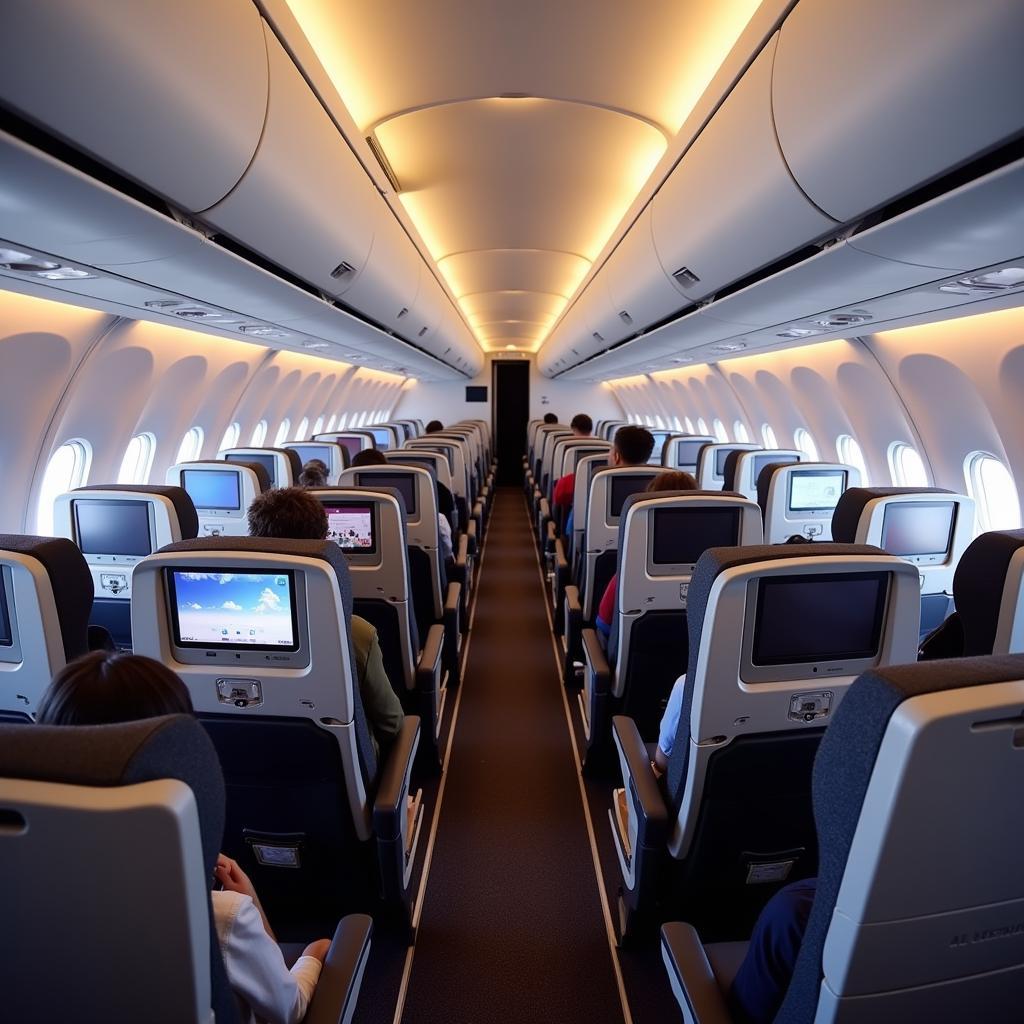Exploring the African Airlines Fleet
The African aviation landscape is constantly evolving, with the “African Airlines Fleet” playing a crucial role in connecting the continent to the world and facilitating intra-African travel. Understanding the composition, size, and strategic importance of these fleets is key to grasping the complexities and potential of the African aviation industry. This article delves into the diverse world of African airlines, examining the various factors influencing their fleet choices and the challenges they face.
African airlines are increasingly recognizing the need to modernize their fleets to compete effectively on the global stage. This involves investing in newer, more fuel-efficient aircraft, expanding route networks, and improving customer service. Several airlines are focusing on acquiring modern aircraft like the Airbus A350 and Boeing 787 Dreamliner to enhance their long-haul capabilities and reduce operational costs. The development of efficient and reliable air travel is crucial for boosting tourism, trade, and economic growth across the continent.
Key Factors Shaping the African Airlines Fleet
Several factors influence the composition of African airlines’ fleets. These include route networks, passenger demand, fuel efficiency, maintenance costs, and financing options. Airlines operating primarily within Africa often choose smaller, regional jets, while those serving international destinations opt for larger, long-haul aircraft. The rising cost of fuel is also a significant driver, pushing airlines to invest in more fuel-efficient models.
Here’s a breakdown of the key factors:
- Route Network: Short-haul routes within Africa often necessitate smaller aircraft, while long-haul international flights require larger, wide-body jets.
- Passenger Demand: Fluctuations in passenger numbers influence the type and size of aircraft required.
- Fuel Efficiency: With rising fuel prices, airlines are increasingly prioritizing fuel-efficient aircraft to minimize operational costs.
- Maintenance Costs: The cost of maintaining an aircraft plays a vital role in fleet selection.
- Financing Options: The availability of financing options often dictates an airline’s ability to acquire new aircraft.
For more insights, you can check out resources like the one about African airlines by fleet size.
 Diverse Fleet of African Airlines
Diverse Fleet of African Airlines
Challenges and Opportunities for African Airlines
The African aviation industry faces several challenges, including limited infrastructure, high operating costs, and fierce competition from international carriers. However, there are also significant opportunities for growth, particularly in the rapidly expanding intra-African travel market. The African airlines aviation E&Y report 2018 provides further information on this topic.
Navigating the Competitive Landscape
Competition within the African aviation industry is intensifying, with both established and emerging airlines vying for market share. This competition can be beneficial, pushing airlines to improve service and offer competitive fares. However, it also presents challenges, particularly for smaller airlines with limited resources. Understanding the competitive landscape is crucial for success in the African aviation market. You might find more information on past rankings, such as the African airlines ranking 2017.
 African Airlines at a Busy Airport
African Airlines at a Busy Airport
What are the future prospects for African aviation?
The future of African aviation holds immense potential, with projections indicating substantial growth in passenger numbers and cargo traffic. The development of new routes and the expansion of existing ones will be key to unlocking this potential. Investment in infrastructure and technology is also crucial for ensuring sustainable growth. Some airlines, like African express airways airlines Kenya, demonstrate the dynamic nature of this market. Furthermore, airlines are exploring new partnerships and alliances to expand their reach and improve their competitiveness. For those interested in direct flights to the US, there’s an article on African airlines that fly direct to usa.
 Modern Cabin of an African Airline
Modern Cabin of an African Airline
Conclusion
The “African airlines fleet” is a dynamic and evolving sector, playing a vital role in connecting the continent. By understanding the factors influencing fleet decisions, the challenges faced, and the opportunities available, we can gain a deeper appreciation for the complexities and potential of the African aviation industry. The future of African aviation hinges on continued investment, innovation, and a commitment to providing safe, reliable, and affordable air travel.
FAQ
- What are the most common aircraft types used by African airlines?
- How are African airlines addressing the challenge of rising fuel costs?
- What are the key growth opportunities for the African aviation industry?
- What role do partnerships and alliances play in the success of African airlines?
- How is technology being used to improve the efficiency of African airlines?
- What are the main challenges facing the development of the African aviation sector?
- How are African airlines improving their customer service offerings?
Need help? Contact us 24/7: Phone: +255768904061, Email: kaka.mag@gmail.com, Address: Mbarali DC Mawindi, Kangaga, Tanzania.



